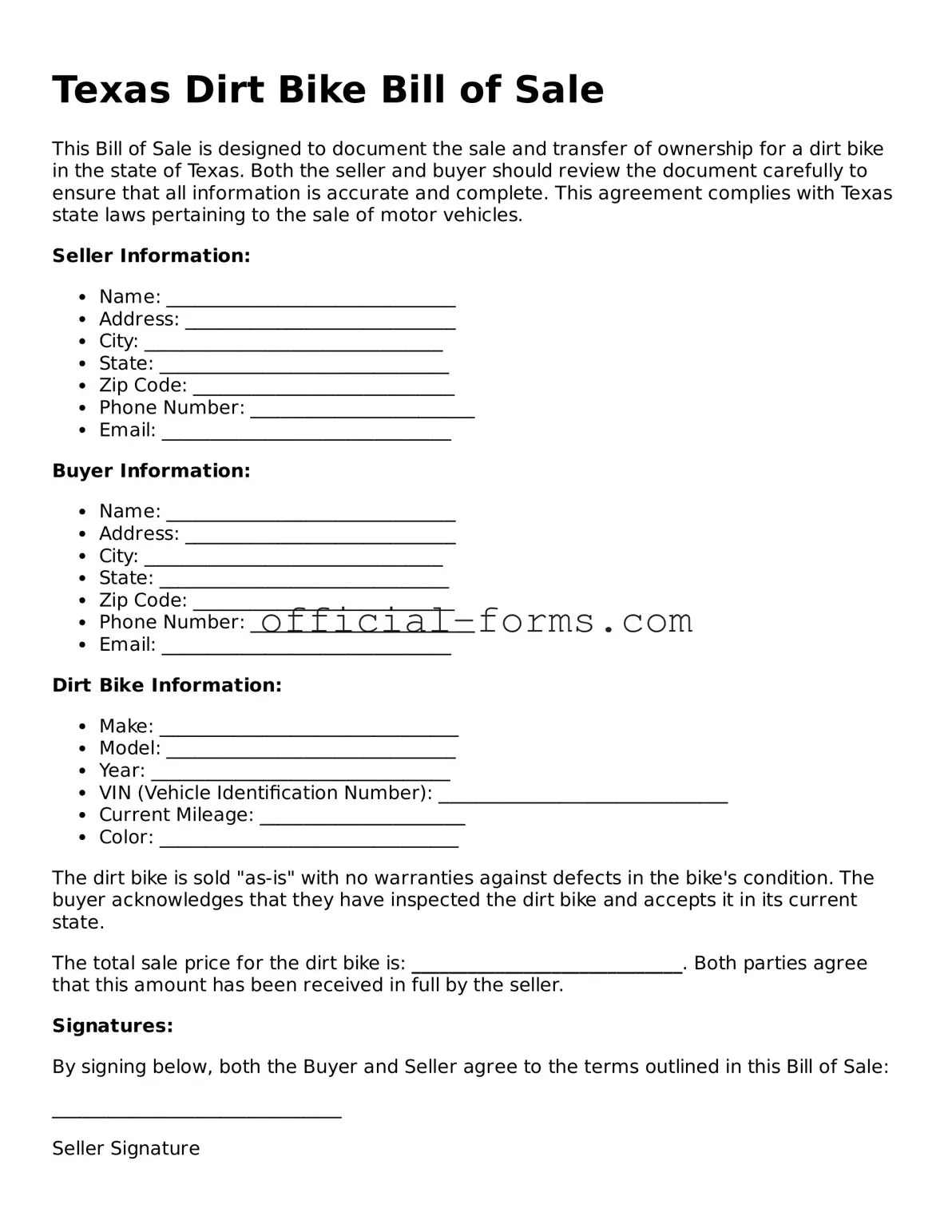When completing the Texas Dirt Bike Bill of Sale form, individuals often overlook crucial details that can lead to complications down the line. One common mistake is failing to provide complete information about the dirt bike itself. The form requires specific details such as the make, model, year, and Vehicle Identification Number (VIN). Omitting any of these can create confusion and may complicate the transfer of ownership.
Another frequent error involves inaccurate or incomplete buyer and seller information. It is essential to include full names, addresses, and contact information. If any of this information is missing or incorrect, it could lead to disputes regarding ownership or difficulties in contacting the other party in the future.
Many individuals neglect to date the bill of sale. The date is a critical element as it establishes when the transaction took place. Without a date, it may be challenging to prove ownership or to resolve any issues that arise after the sale.
Additionally, some people fail to sign the document. Both the buyer and the seller must sign the bill of sale to validate the transaction. A lack of signatures can render the document ineffective, leaving both parties vulnerable to potential legal disputes.
Another mistake is not including the purchase price. The bill of sale should clearly state the amount paid for the dirt bike. This information is essential for both parties for tax purposes and can help establish the value of the vehicle in case of future transactions.
In some cases, individuals do not provide sufficient details regarding the condition of the dirt bike. It is advisable to include any known defects or issues. This transparency can protect both parties and help avoid misunderstandings later on.
Some people also forget to make copies of the completed bill of sale. Having a copy for both the buyer and seller serves as a record of the transaction. This documentation can be invaluable should any disputes arise or if either party needs to reference the sale in the future.
Another error is failing to check for any liens or outstanding debts on the dirt bike. Before finalizing the sale, it is wise to ensure that the vehicle is free of any financial encumbrances. This step protects the buyer from inheriting any liabilities associated with the dirt bike.
Moreover, individuals sometimes ignore the importance of notarization. While not always required, having the bill of sale notarized can add an extra layer of legitimacy to the transaction. This is particularly useful in cases where the buyer or seller may not know each other well.
Lastly, some people neglect to review the entire form before submission. Taking the time to double-check all entries for accuracy can prevent many of the issues mentioned above. A thorough review ensures that all information is correct and complete, making for a smoother transaction.
